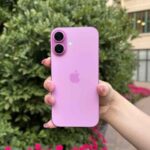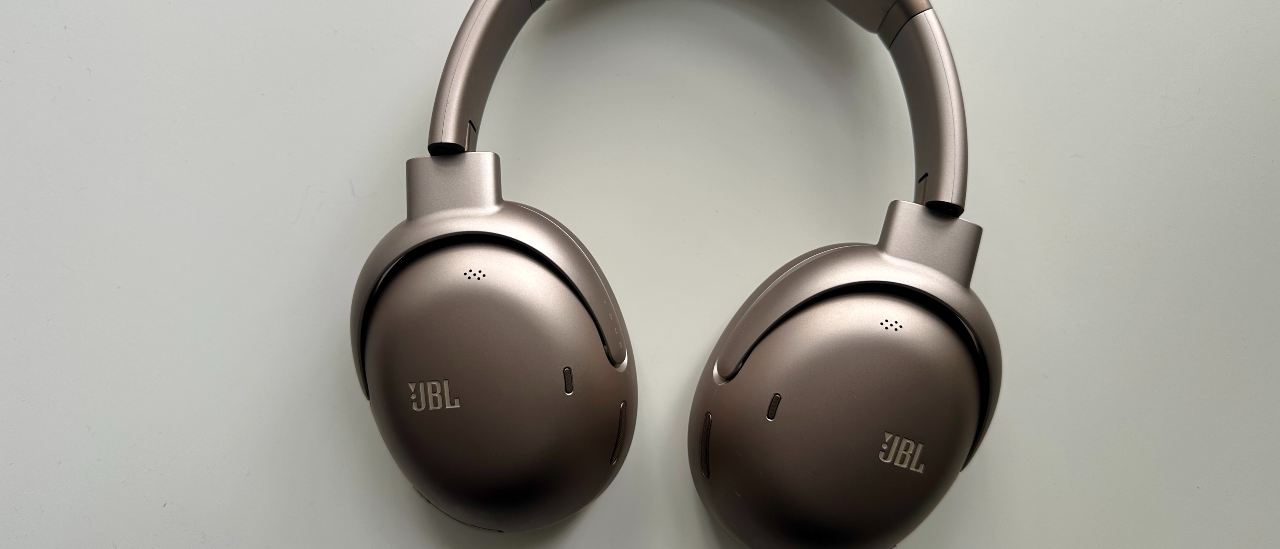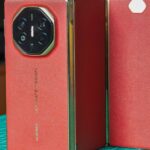Why you can trust TechRadar
We spend hours testing every product or service we review, so you can be sure you’re buying the best. Find out more about how we test.
JBL Tour One M3: two-minute review
JBL has pitched its new Tour One M3 wireless over-ear noise-cancellers right into the heart of the action. They’re priced to compete with hitters as big as Bose and Sony, but the company hasn’t just slapped a premium price-tag on and hoped for the best. These headphones are specified to compete, and even have an optional extra that elevates their functionality beyond that of any price-comparable rival.
Wireless connectivity, frequency response and battery life are all well up to standard. Control options are numerous and well implemented. And with the optional Smart Tx transmitter, JBL is able to turn the Tour One M3 into a wireless receiver of non-wireless sources, as well as facilitating group listening for as many people who have Auracast-compatible headphones would like to participate.
There’s no arguing with the standard of build and finish that’s on display here, either, though the majority of the plastics used in the construction don’t feel as expensive as you might expect in a product as pricey as this. Still, at least the comfort quotient is high, thanks to some judicious padding and a low overall weight.
And if you like your sound punchy, upfront and animated, there’s plenty to enjoy here and the JBL don’t scrimp on the details, either. Their spatial audio effect is subtle and effective, and the noise cancellation puts them up there among the best noise cancelling headphones mix with anything that hasn’t got the word ‘Bose’ on it.
Don’t venture into bigger (higher) volume levels, though, because no good can come of it. The treble response, which is assertive at the best of times, can become unruly and the overall sound becomes two-dimensional and rather shouty.
JBL Tour One M3 review: Price and release date
- Release date: April 15th, 2025
- Price: $349 ($399 with Smart Tx transmitter); £329 (£379); AU$479 (AU$549)
You don’t need me to tell you this is serious money for a pair of wireless over-ear noise-cancellers, even before you add in the cost of the Smart Tx transmitter – $349 ($399 with the transmitter); £329 (£379); AU$479 (AU$549).
JBL has picked a fight with brands as credible as Bose, Bowers & Wilkins, Sennheiser and Sony (to name just four) by pricing the Tour ONE M3 this way, which can mean one of only two things. Either JBL is completely confident or JBL is utterly rash.
Whichever your preference, it’s probably not enough to put the JBL Tour One M3 among the contenders in the best wireless headphones market.
JBL Tour One M3 review: Specs
|
Weight: |
278g |
|
Drivers: |
40mm mica dome dynamic |
|
Battery life: |
40 hours (ANC on); up to 70 hours (ANC off) |
|
Control: |
app; physical/touch; voice |
|
Bluetooth: |
5.3 (SBC, AAC, LC3, LDAC) |
JBL Tour One M3 review: Features
- Bluetooth 5.3 with LDAC codec compatibility
- Up to 70 hours of battery life
- Optional Smart Tx transmitter
There are boxes to be ticked when you’re charging this sort of money for a pair of wireless noise-cancelling over-ears, most of which are marked ‘the best version of X’, and the JBL Tour One M3 ticks all of them.
For instance, they use Bluetooth 5.3 for wireless connectivity, and feature multipoint connectivity as well as compatibility with LC3 and LDAC codecs as well as SBC and AAC. They will run for as much as 70 hours (at moderate volume and with noise-cancellation switched off) between charges, and you can expect 40 hours even if you listen at high volume and with ANC switched on.
The ANC itself is a three-stage system: choose between ‘ambient aware’ (an in-app slider controls how much of the outside world is allowed in), ‘talk-thru’ (which pauses music while significantly boosting external sounds, voices in particular) and ‘noise-cancelling’. There’s another slider here, to adjust ANC intensity – or you can switch on ‘adaptive ANC’ to automatically adjust the level based on ambient conditions. ‘Auto compensation’, meanwhile, assesses the headphones’ position on your ear relative to your ear canal in order to adjust ANC on the fly.
JBL suggests the Tour ONE M3 have a frequency response of 10Hz to 40kHz, which, if it’s anything like accurate, should be ample. Sound is served via a couple of 40mm mica dome dynamic drivers.
The control app itself has plenty of functionality beyond fiddling with active noise-cancellation, of course – ‘JBL Headphones’ is free for iOS and Android and is one of the most comprehensive apps around.
For instance, it allows you to select a ‘spatial audio’ setting (‘fixed’, ‘head-tracking’ or ‘off’) and investigate your EQ options (there are six presets and the ability to specify some custom settings using a 10-band equalizer). You can take a hearing test to help the headphones adapt to your specific hearing profile, exert some influence of the physical methods of control, set a volume limiter and plenty more besides. These include checking on firmware updates and remaining battery life, plus adjusting the length of time without an incoming signal required before the headphones power down – basically, this app is a model of usefulness and stability.
Then there’s the Smart Tx transmitter (a cost option, let’s not forget), through which JBL has an authentic Point of Difference. If you’re familiar with the ‘retransmission case’ that the top-end Bowers & Wilkins Pi8 true wireless in-ears have been supplied with for the past few years, you’ll know one of the things the Smart Tx can do – attach it to a non-wireless source of music, such as the in-flight entertainment system, via one of its USB-C slots and it will wirelessly stream to the headphones.
But there’s more to this little brick than that. It also uses Auracast to allow multiple devices to listen to whatever is playing into it (as long as all headphones are Auracast-compatible, of course). Its full-colour touch-screen duplicates quite a lot of the app’s functions, too, so to make changes you don’t have to fish your phone out of the pocket on the back of the seat in front of you. Yes, it needs charging (via its second USB-C) and, also yes, it’s another thing to disappear down the back of the sofa or something, but for those who fancy its functionality, it’s a very useful little device indeed.
JBL Tour One M3 review: Sound quality
- Punch, drive and detail in fairly equal measure
- Effective and quite nuanced spatial audio effect
- Easily spooked by bigger volumes
Some headphones don’t really mind the sort of stuff you listen to, or how you choose to listen to it – they just get on with the job, regardless. The JBL Tour One M3, I think I can safely say, are not those headphones.
As far as music styles are concerned, they’re not especially fussy, but where quality of recording is concerned, they have definite preferences. It’s mostly due to their treble response – the top end as reproduced by the Tour One M3 is absolutely as bright and bitey as is acceptable. So if you provoke it with a recording that shares that same high-end edginess – Nick Lowe’s You Got the Look I Like is a good example – things can get compounded into something very close to hardness.
There’s no shortage of detail revealed at the top of the frequency range, though, and that’s the case throughout. At every point the JBL are an observant and insightful listen, able to identify even the most fleeting episodes in a recording. Midrange resolution is impressive, and at the bottom end they punch with the sort of weight and determination we’ve all come to expect from JBL equipment. There’s a slight bias towards the bottom of the frequency range when EQ settings are left alone, but this can be mitigated a little in the app. What EQ adjustment can’t do, though, is affect tonality that’s nicely naturalistic right until the top end gets involved.
Dynamic impetus is considerable, especially where the biggest shifts in volume or intensity are concerned, and the upheavals in Fiona Apple’s Fetch the Bolt Cutters are described in full. The smaller, but no less significant, harmonic variations get appropriate weighting, too. Soundstaging, when listening in straight stereo, is organized and reasonably expansive, but there’s a pleasant unity to the stage, an idea of performance, that makes for a confident and convincing presentation.
Switch on spatial audio and the effect is much less showy than some rival designs shoot for, and it’s all to the good as far as I’m concerned. The stage opens up in every direction without losing too much of its definition, and the sensation of space doesn’t feel in any way artificial.
No, the major issue here concerns volume, and the Tour One M3’s inability to cope with it. Turn up the volume and the sound becomes two-dimensional and rather too assertive – every part of a recording seems to rush to the front of the stage, and the top-end tonality (which is problematic all the time) becomes quite abrasive and almost glassy. ‘Composure’ is the word I’m after, and it deserts the JBL the moment you decide to listen at big levels.
The active noise-cancellation, by way of contrast, needs no excuses making for it. Does it cloak you in an eerie blanket of silence like the equivalent Bose headphones can manage? No, it doesn’t. Does it bear comparison to the very best alternatives out there that aren’t by Bose? Most definitely. Without altering their sonic characteristics or introducing a suggestion of counter-signal, the Tour One M3 deal with the vast majority of external distractions and leave you free to get on with listening.
Not too loud, though, obviously.
- Sound quality score: 3 / 5
JBL Tour One M3 review: Design
- Fold flat and inwards, so have quite a small carry-case
- Choice of three finishes
- Perceived value is not all it might be
Don’t get me wrong, there’s absolutely nothing wrong with the way the JBL Tour One M3 are built and finished. Despite having so much articulation in the frame that they can fold up into a winningly compact carry-case, they give every impression of being carefully constructed and ready to last. But when it comes to perceived value, the embodiment of the word ‘premium’ that comes from the look, the feel and, let’s face it, the smell of a pair of headphones, the Tour One M3 don’t have it in anything like the quantities of their price-comparable rivals.
In terms of the look, that might be down to the fact that my review sample is in an insipid finish called ‘mocha’ – perhaps the appearance is a bit classier in the black or blue alternatives. But the color has nothing to do with the way the Tour One M3 feel and the plastics which make up a lot of the frame are hard and feel inexpensive. All of which is unfortunate, given how expensive these headphones actually are.
The practicalities of the design are absolutely fine, though. The contact points are pleather-covered memory foam, and they’re softly pliant. The headband adjusts with a very positive action, and the clamping force it exerts is nicely judged. These 278g headphones are easy to wear and it’s simple to get and remain comfortable inside them. JBL isn’t quoting an IP rating, though, so it’s worth making sure you don’t get too comfortable in inappropriate environments.
On the left earcup there’s a slender ‘volume up/down’ rocker switch. On the right, meanwhile, a ‘power on/off/Bluetooth pairing’ slider is positioned above an ‘action’ button that cycles through ‘noise-cancelling’, ‘ambient aware’ and ‘talk-thru’. The surface of this earcup also has a touch surface that allows control over ‘play/pause’, ‘skip forwards’, ‘skip backwards’ and ‘summon voice assistant’, and this is where telephony functions are accessed, too. It’s possible to unintentionally trigger touch controls when feeling for that ‘action’ button, but broadly speaking these are effective, well-implemented user interfaces.
The USB-C slot can be used both for charging the battery and for data transfer – which means the Tour One M3 are genuinely high-resolution headphones if hard-wired to an appropriate source. And there are eight mics spread over the two earcups taking care of voice-assistant interaction, telephony and noise-cancellation.
JBL Tour One M3 review: Value
- Variable sound
- So-so perceived value
- Excellent control options, including the Smart Tx transmitter
Ultimately, the JBL Tour ONE M3 can’t be said to offer cast-iron value for money. They have a lot going for them where comfort is concerned, their noise-cancelling is very good, their control options are all very well realized and, in some ways, they sound very enjoyable and entertaining, too.
But the hard, quite cheap-feeling plastics that make up a lot of the frame, the tendency to lose a little self-control at volume, and the sheer strength of the products they’re competing against all conspire to make the JBL a diverting alternative rather than a nailed-on candidate for your ‘value for money’ shortlist.
Should I buy the JBL Tour One M3?
|
Section |
Notes |
Score |
|---|---|---|
|
Features |
Bluetooth 5.3 with LDAC codec compatibility; optional Smart Tx transmitter a potential game-changer |
5 / 5 |
|
Sound quality |
Excellent ANC; dynamic impetus; nuanced spatial audio; but too easily spooked at high volumes |
3 / 5 |
|
Design |
Fold flat into neat carry-case; comfortable; hard plastic don’t lend premium finish |
4 / 5 |
|
Value |
Very good control options; so-so perceived value |
3.5 / 5 |
Buy them if…
Don’t buy them if…
JBL Tour One M3 review: Also consider
How I tested JBL Tour One M3
- Connected to iOS and Android music players, wired and wirelessly
- Connected using the Smart Tx transmitter to a laptop
- Lots of different music, lots of different file types and sizes
I listened at my desk, connecting the Smart Tx transmitter to a laptop, I listened while out and about and I listened on public transport, to lots of music of many different file types and sizes. I spent over a week critically to get the best feel possible for the JBL.
Read more about how we test
First reviewed: May 2025
Read the full article here















